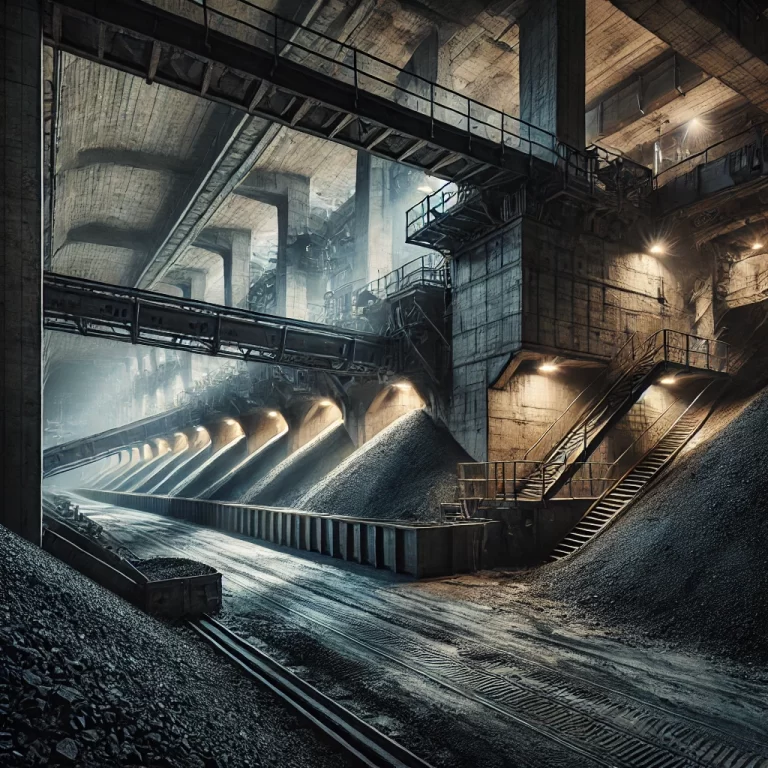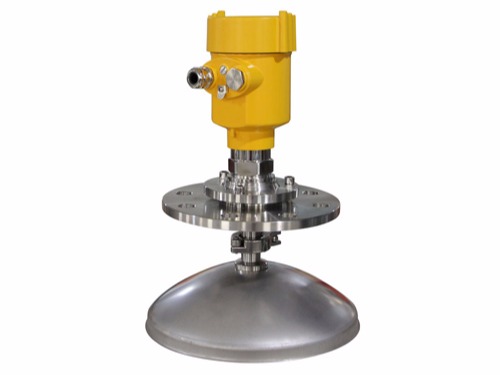In the process of coal mining and transportation, accurate measurement of the level of underground coal bunkers is crucial to ensuring production safety and improving operating efficiency. Radar level meters have been widely used in underground coal bunker level monitoring.
Radar level meters are based on microwave radar technology and measure distance by emitting microwave signals and receiving their reflected waves.
When microwave signals encounter the surface of the material, part of the signal will be reflected back. The radar level meter receives these reflected signals and calculates their flight time to determine the level height.
The core of this technology lies in the time of flight principle (ToF), that is, the distance is calculated by measuring the round-trip time of the signal. Since microwaves can penetrate media such as dust and steam, radar level meters are particularly suitable for level measurement in harsh environments.

When installing a radar level meter in an underground coal bunker, the bunker structure, material properties and environmental factors need to be considered. Generally speaking, the radar level meter should be installed in the center of the top of the coal bunker to avoid dead angles and edge effects affecting the measurement accuracy.
During the installation process, the instrument needs to be properly debugged, including adjusting the transmission power, setting appropriate signal thresholds, etc., to ensure stable and reliable measurement results in a complex and changeable underground environment. In practical applications, the radar level meter continuously transmits microwave signals and receives reflected waves in real time.
By analyzing the characteristics of the reflected waves, such as intensity, phase and other information, the level change can be judged. For example, when the material in the coal bunker increases, the flight time of the reflected wave will increase accordingly; otherwise, it will be shortened. In addition, the radar level meter can also identify multiple echoes, effectively avoiding measurement errors caused by the internal structure of the coal bunker.
The built-in microprocessor of the radar level meter is responsible for processing and analyzing the measurement data. Through algorithm optimization, the measurement accuracy and stability can be further improved. For example, the use of dynamic signal tracking technology can adjust the measurement parameters in real time to adapt to changes in material characteristics; and the use of data fusion technology can integrate data from multiple measurement cycles to reduce the impact of accidental errors.

The use of radar level meters in underground coal bunkers also involves equipment safety and maintenance issues. Due to the complex underground environment and the risk of explosion, it is necessary to use intrinsically safe or explosion-proof radar level meters.
At the same time, regular inspection and maintenance of the equipment is also the key to ensure long-term stable operation. This includes operations such as cleaning the antenna, checking electrical connections, and updating software.
Radar level meters have shown significant advantages in the field of underground coal bunker level monitoring due to their non-contact measurement, high precision and strong adaptability.
Through reasonable installation, precise debugging and scientific maintenance, radar level meters can provide coal mining enterprises with stable and reliable level information, helping to improve production efficiency and safety assurance levels.
